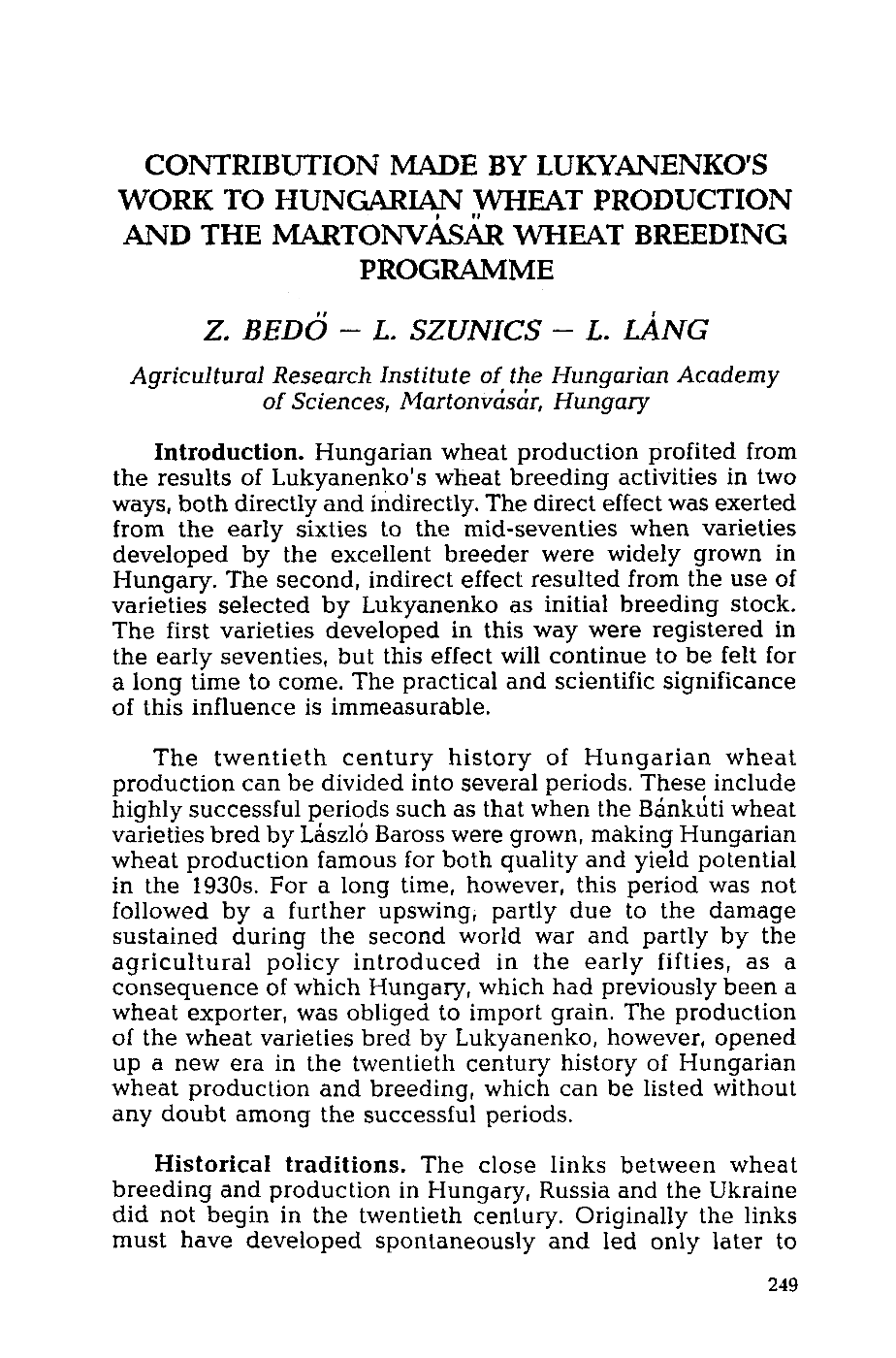

CONTRIBUTION MADE BY LUKYANENKO'S
WORK TO HUNGARIAN WHEAT PRODUCTION
AND THE MARTONVASAR WHEAT BREEDING
PROGRAMME
Z.
BEDO
-
L. SZUNICS
-
L. LANG
A g r ic u ltu r a l R e s e a r c h I n stitu te o f th e H u n g a r ia n A c a d em y
o f S c ie n c e s , M a rto n v a s a r, H u n g a r y
Introduction.
Hungarian wheat production profited from
the results of Lukyanenko’s wheat breeding activities in two
ways, both directly and indirectly. The direct effect was exerted
from the early sixties to the mid-seventies when varieties
developed by the excellent breeder were widely grown in
Hungary. The second, indirect effect resulted from the use of
varieties selected by Lukyanenko as initial breeding stock.
The first varieties developed in this way were registered in
the early seventies, but this effect will continue to be felt for
a long time to come. The practical and scientific significance
of this influence is immeasurable.
The twentieth century history of Hungarian wheat
production can be divided into several periods. These include
highly successful periods such as that when the Bankiiti wheat
varieties bred by Laszlo Baross were grown, making Hungarian
wheat production famous for both quality and yield potential
in the 1930s. For a long time, however, this period was not
followed by a further upswing, partly due to the damage
sustained during the second world war and partly by the
agricultural policy introduced in the early fifties, as a
consequence of which Hungary, which had previously been a
wheat exporter, was obliged to import grain. The production
of the wheat varieties bred by Lukyanenko, however, opened
up a new era in the twentieth century history of Hungarian
wheat production and breeding, which can be listed without
any doubt among the successful periods.
H istorical trad ition s.
The close links between wheat
breeding and production in Hungary, Russia and the Ukraine
did not begin in the twentieth century. Originally the links
must have developed spontaneously and led only later to
249
Научная электронная библиотека ЦНСХБ









